Urinary tract infections (UTIs) are one of the most prevalent healthcare-associated infections (HAIs). Indwelling urinary catheters (IUCs) are responsible for 70%–80% of such infections, which are referred to as catheter-associated urinary tract infections (CAUTIs). CAUTIs are associated with negative patient outcomes, such as increased patient discomfort and restriction of activity, enhanced morbidity and mortality, extended length of hospital stay, decreased quality of life, and increased hospital costs. Approximately 12%–16% of adult hospital inpatients have an IUC at some time during their hospital stay, and the risk of acquiring a CAUTI increases by 3%–7% with each IUC day.
Women are more susceptible to a UTI due to the shorter length of the urethra compared to men, and due to the anatomical position of the urethra within the perineal region (near both the vagina and the anus). Placement of an IUC in a female patient increases the risk of infection as it facilitates the introduction of bacteria into an otherwise sterile bladder, leading to a CAUTI. However, recently the female external urinary catheter (FEUC) has become available as a non-invasive alternative for urinary management in female patients before an IUC placement is considered, or upon the removal of an IUC when it is no longer needed.
There are several available options for external urine management for the female anatomy that mitigate the risk of acquiring CAUTI and provide a superior standard of care as compared to an indwelling catheter.
| Intermittent Straight Catheters – Self-catheterization, also called clean intermittent catheterization (CIC) or intermittent self -catheterization (ISC), involves inserting a thin, hollow tube called a catheter into the bladder through the urethra. Urine drains out of the catheter into a toilet or container. After the bladder is emptied the catheter is removed. This step is repeated at regular intervals several times a day. |
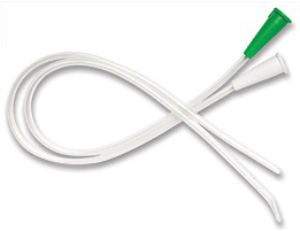 Intermittent Straight Catheters |
| Female Urinal – The bed urinal is a device that lets you pass urine in bed, and this is stored in a bottle so it can be disposed of safely. Urinals are available for both men and women with specific shapes designed to fit female or male anatomy. Urinals are shaped like a bottle and the average urinal can hold up to 1 liter of urine. Both mobile and immobile people with incontinence often find it useful to keep a urinal close during the night. |
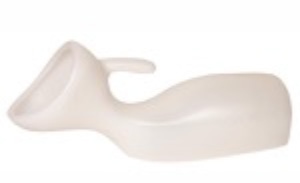 Female urinal |
| Bedpans – A bedpan or bedpan is an object used for the toileting of a bedridden patient in a health care facility, usually made of a metal, glass, or plastic receptacle. A bed pan can be used for both urinary and fecal discharge. Bedpans are usually constructed of stainless steel and may be cold, hard, and uncomfortable. On the other hand, stainless steel is easy to clean and durable. The smaller profile of the supporting area may leave the patient susceptible to pressure injuries with prolonged usage. |
 Bedpans |
To mitigate these challenges, new ergonomic bedpans have been developed which support the patient with a larger area of warm plastic. Some designs completely cover the genitalia during use, offering protection and an extra measure of privacy. On the other hand, the material is difficult to clean, and plastic may be a reservoir for microorganisms
| Tillacare Uricap – UriCap Female is a non-invasive, external urine collection device designed to fit the female anatomy around the urethra. The device comprises a disposable single-use silicone cap that covers the opening of the urethra and is stabilized by a guide. The cap is connected to a standard catheter and urine collection bag. UriCap helps prevent contact between urine and the skin, a common reason for skin irritation. It is particularly useful for patients at night or that are bedridden and suffer from urinary incontinence. The device offers an innovative solution for patients in nursing homes, home care or hospitals. |
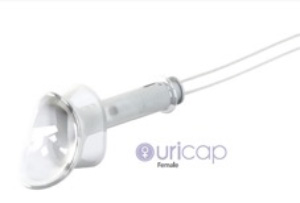 Tillacare Uricap |
| Versette Female External Catheter – The Versette is a wicking-based female external catheter that employs a mesh core that conforms to the anatomy and a mesh securement that secures the mesh core in place. The wicking fabric of the catheter is placed against the urethra, and continuous suction is used to wick urine away from the patient into a collection vessel that can also measure urine output. |
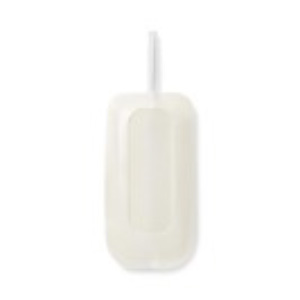 Versette Female External Catheter |
| PureWick – The PureWick Female External Urinary Catheter allows for non-invasive urine output management for female patients. The catheter comprises of a plastic sheath that houses a hydrophilic wicking material with a suction tubing on top. The wicking material is aligned with the urethral opening by parting the labia and allows urine to gradually get diverted through the tubing using a low-pressure suction. PureWick for home use gives females managing urinary incontinence a new and simple option. The PureWick catheter is sometimes referred to as a banana catheter, PureWick at home, and the BD PureWick. |
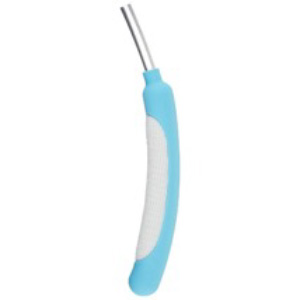 PureWick Female External Catheter |
| QiVi Female External Catheter – QiVi is a truly external Female Urine Management device that has 3 major components – A urine diversion chamber, a novel, derma-friendly silicone-based adhesive, and cranial suction tubing.The QiVi Female External Catheter contours snugly over the patient’s anatomy, the derma-friendly adhesive offsets the device anchoring to the less sensitive area of the suprapubic, the urine collection chamber collects the output and diverts the urine through the cranial tubing with the help of negative pressure suction. |
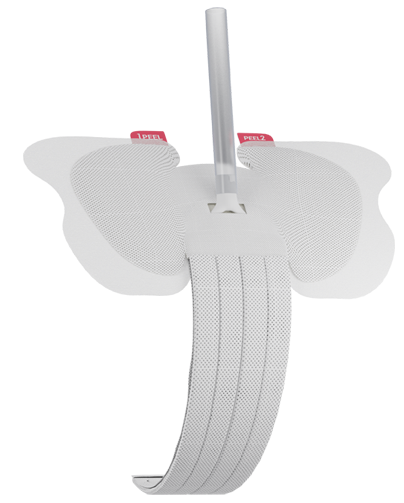 QiVi Female External Catheter |


30 replies on “What are Different Types of Female External Catheters?”
You’re obsessed with suctioning away. What about just collecting like with an indwelling catheter?
Indwelling catheters are needed only when patients have urinary retention. Clinical societies and patient advocacy groups recommend using external urine management devices instead of using Foley, or early removal of Foley.
The advantages of external urine management devices like QiVi – Male, Female and Lite, are reduction in CAUTI, IAD and patient comfort. Also it must be noted that external catheters like QiVi are clinically equivalent to Foley catheters when the patient has no urinary retention. Example, QiVi – Male External Catheter is 99.6% accurate in output measurement.
We value your feedback and have forwarded clinical evidence, videos and other collaterals on your email. Please let us know if you have any specific questions or comments.
I am sorry I have not replied till now, didn’t find any emails from you and didn’t access your site as you told me that you do not sell to Australia. If I can reinstate our communication and if your situation on selling to us has changed I would be very interested in finding out all about your external catheter products. No need for a video, just if you think more info is needed let me know, please. I am paralyzed due to a stroke decades ago, but my incontinence seems to be more disheartening than the paralysis. If you can help me please reply, I am desperate
Best regards, Mary
Sorry for the inconvenience. Unfortunately, we have no plan of expansion in Australia. We will connect with you if anytime we change the roadmap.
Mary, certainly relate to “being desparate”! It is most frustrating. I’m studying PureWick product as it has been VERY successful for me during hospital times. Maybe it is available in Australia. Perhaps you have discovered another good option since you wrote in!! Best, Betty in Raleigh, NC
I have used the devices that “suck away” the urine. Both Purewick and Preemafit were fantastic!! I didn’t have to worry about missing the bedpan and soaking the bed if the brief didn’t hold everything.
I recommend any system that wicks (sucks) away the urine!!
Dear Sandy, thank you for your comment and interest in the QiVi – Female External Urine Management Device.
Are you affiliated with a hospital? You mentioned you have tried both Purewick and PrimaFit. If you are at a hospital, we would like to show you a 10-minute demo of QiVi – FEC and get your insights.
QiVi is the only external urine management device that does not get squished between the anatomy and is known to prevent IAD and necrosis. Our device is more comfortable for the patient and works well on both petite and high BMI patients. Thank you!
Again I ask, why the wicking away? I just need a system to collect my unstoppable urine flow. I am desperate. Everything is for maile, or with electronic machine. Please point me to a possible external urine management.
I was just in the hospital for a hip revision and am non weight bearing now here at home for 6 weeks. While in the hospital they used the Purewick system for me 24/7 , though they got me to the bathroom or commode as I was able.
Now I’m home, still non weight bearing, and my husband has to help me (always a walker and gait belt) every single time I get up, day or night. I have a tendency to urinate 3-4 times between 11 pm and 7 am, when he sleeps. I’m using briefs, which don’t hold enough on many nights. Plus, he has to help me on and off with them every time I get up to use the commode or toilet during the day. When the brief is overloaded at night, there is the cleanup of the waterproof pad and towel in the morning.
I’m here to tell you that even though this system is expensive, it is worth every penny. I think the price of the external part is a huge rip-off and makes its use prohibitive for many, if not most…. This device is a MIRACLE! There is never a needed to change a brief at night, and if you’re sitting at home, same thing. It’s amazing how easy it is to use.
This would take care of an unstoppable urine flow as it continuously suctions, and you can’t even feel the device in place. Just my 2 cents from my personal experience. I don’t know if it would work in your case.
Enquiring for a obese, bed ridden patient due to left body paralysis?
As a replacement of internal catheters?
How it hold with basic movements in a person with 91kg weight and 5’4heigth, age 66? Comfort, leakage related things to know.
Hi Rahul
Thankyou for reaching out. Our QiVi External Catheter is a universal fit urine management solution which is available for both male and female patients, one size fits all anatomies. These catheters adhere to the suprapubic region securely eliminating risk of any leakage, keeping your comfort and safety a top priority, regardless of your size. The adhesive helps offset device anchoring to the less sensitive area of the suprapubic region to reduce discomfort and skin irritation
If you have any more questions or need further information, please email us at [email protected]
What system is it Diane? Sounds wonderful! Purwick or another system?
QiVi – Female External Urine Management Device is the safest and most accurate product in this category, but does require a continuous suction device. If you are looking for a non-powered device, you may consider the UriCap device. Here is a link for your easy reference – https://www.tillacare.com
Thank you, I am very interested in the Uricap, but can’t find a way to buy it. I’ll try your link.
Regards, Mary
Thanks, Consure for sharing!
Mary – To order UriCap Feamle for at-home use simply call toll-free 888-764-6589.
UriCap Female has covered my Medicare and many insurances for qualified women.
UriCap does not require external or wall suction and uses a patented design with gravity to eliminate the issues with the at-home use of suction. UriCap Female is Easy to Apply – Safe & Sanitary – Discreet/ Odor Free -Skin Friendly – Comfortable for use at night only or up to 24 hours per day. We look forward to helping you. Order UriCap at this link: https://mensliberty.com/our-solution/uricap/
I use the pure wick! It’s great but feel it needs a little more sucktion. Qigong sounds interesting . Can you give me more information on that one?
“Purewick, PrimaFit, Versette, and other similar external female urine management devices use absorbent or wicking material, to sponge urine first and then use suction to dry out the wicking material. As you can imagine, this is not a very efficient way to manage urine and patients often complain about discomfort, wetness, redness (dermatitis), or itchiness. QiVi – Female External Urine Management device uses a proprietary hydrophobic polymer that quickly moves/flows urine away from the body and gets suctioned to a canister. Given the inherent technical differences in the products, QiVi uses lower suction pressure and is 99% accurate in output measurement.
Thank you for your comment. And please do let us know if we can assist you in any way.”
A lower suction pressure still needs an electric device to work it. Not practicable to get around with. And not needed for incontinence. I just need a device to get onto my pubic area with tubing that leads to a plastic collection bag. Could any of your products be modified?
Hi Mary. Unfortunately, we do not have any devices for female UI management that can be modified to work without suction, but we will pass on these inputs to the team.
These external catheter devices still poses negative outcomes for both male and female patients. Why not try the newest external catheter used for both genders, UniSUC.
UniSUC solves currents problems with leakage, discomfort, single-gender use and cost.
Visit alpepllc.com
Hey Alvin. Thank you for sharing this innovation with us.
Do you have any idea if any of the above options is available in Egypt, and the least cost.
My mum is an MS patient on IMC since yrs.
Hi,
Thank you for reaching out. Unfortunately, our product line is not available in Egypt at the moment.
My mother is 85 years old with severe incontinence . Your Qivi system seems very promising. Is it available in Pakistan?
Which system is available in India
Thanks for showing interest in our product. We will get in touch with you through email.